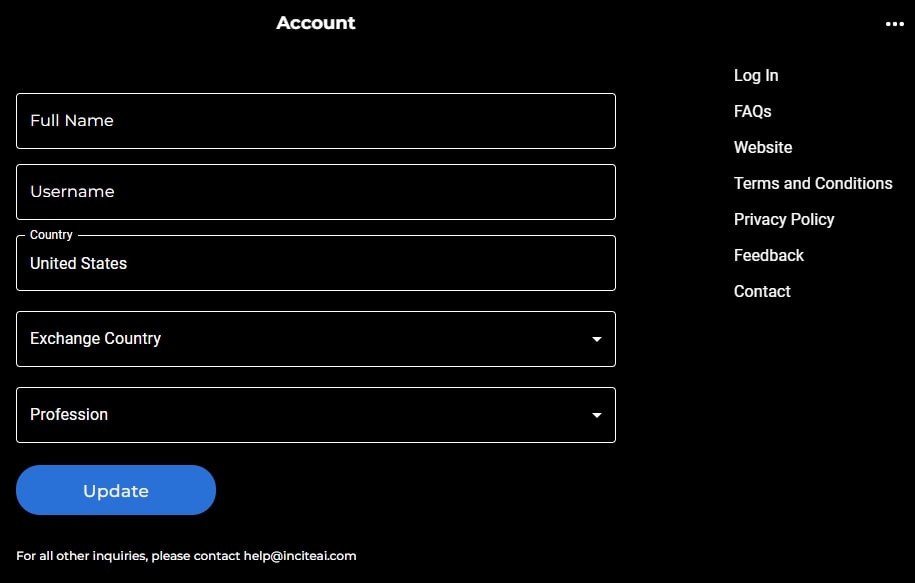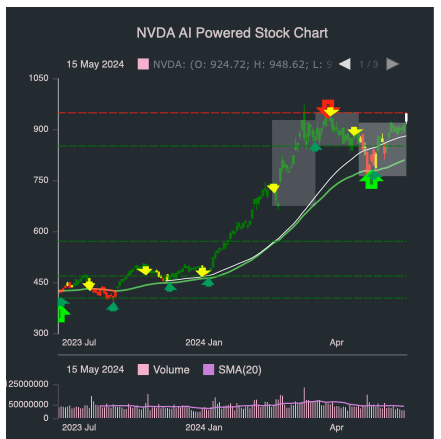It is essential to evaluate the data quality and sources used by AI-driven trading platforms and platforms for stock predictions for accurate and reliable insights. Insufficient data could lead to poor forecasts as well as financial losses, and a lack of trust of the system. Here are 10 top tips to evaluate data quality and the source:
1. Verify the data sources
Examine the sources of the information. Verify that the platform is based on reliable, well-known data sources (e.g. Bloomberg Reuters Morningstar, or stock exchanges such NYSE, NASDAQ).
Transparency. The platform must publicly disclose the sources of data it utilizes and should be able to keep them up to date.
Beware of dependency on a single source: Trustworthy platforms often aggregate data from multiple sources in order to lessen the chance of errors and bias.
2. Assess Data Freshness
Data that is delayed or real-time? Determine whether the platform offers real-time or delayed data. The availability of real-time data is vital to ensure that trading is active. The delayed data is sufficient to provide long-term analysis.
Check the frequency of updating data (e.g. hourly, minute by minute, daily).
Historical data consistency: Make sure that historical data is free of gaps and anomalies.
3. Evaluate Data Completeness
Find missing data.
Coverage. Make sure that the platform includes a variety of stocks, markets and indices that are pertinent to your strategy of trading.
Corporate actions: Make sure that your platform takes into account stock splits and dividends as well as mergers and other corporate events.
4. The accuracy of test data
Data consistency can be ensured by comparing the data on the platform to other trustworthy sources.
Error detection: Check for outliers, erroneous price points, or mismatched financial metrics.
Backtesting: You can use historical data to test trading strategies. Examine if they meet your expectations.
5. Review the Data Granularity
Level of detail - Make sure you can get granular details such as intraday volumes, rates, bid/ask spreads as well as order books.
Financial metrics: Determine whether your platform has comprehensive financial reports (income statement and balance sheet) along with key ratios such as P/E/P/B/ROE. ).
6. Check for Data Cleaning & Preprocessing
Data normalization. Make sure the platform is normalizing data in order to keep it consistent (e.g. by making adjustments to dividends, splits).
Outlier handling: Check how your system handles anomalies or data that is outliers.
Imputation of missing data is not working - Make sure whether the platform uses solid methods to fill in the data gaps.
7. Assessment of Consistency in Data
Timezone alignment: Ensure all data is aligned to the same timezone in order to prevent any discrepancies.
Format consistency - See if data are presented in the same way (e.g. units, currency).
Cross-market compatibility: Ensure that the information coming from various exchanges and markets are harmonized.
8. Assess Data Relevance
Relevance to your trading strategy: Make sure the information is in line with your style of trading (e.g. technical analysis, fundamental analysis, quantitative modeling).
Features selection: Check that the platform offers useful features to improve your the accuracy of your predictions (e.g. sentiment analysis macroeconomic indicator news data).
Check the integrity and security of your data
Data encryption: Ensure that your platform uses encryption to protect the data when it is transferred and stored.
Tamperproofing: Check that the data hasn't been altered or manipulated.
Check for compliance: Make sure that the platform you are using is compatible with all applicable laws regarding data protection (e.g. GDPR or CCPA).
10. Transparency in the AI Model of the Platform is evaluated
Explainability: The platform should give insight into how AI models make use of data to make predictions.
Bias detection: Determine whether the platform monitors and mitigates biases in the data or model.
Performance metrics - Assess the platform's track record and performance indicators (e.g. precision, accuracy, recall and precision) to assess the reliability of their predictions.
Bonus Tips
User reviews and reputation - Research feedback from users and reviews in order to assess the reliability of the platform and the data quality.
Trial period: Use an unpaid trial or demo to test the platform's data quality and features prior to signing.
Support for customers: Ensure that the platform offers a solid support for problems related to data.
These tips will help you to better evaluate the accuracy of data as well as the sources utilized by AI platform for stock predictions. This will allow you to make better educated decisions about trading. View the most popular inciteai.com AI stock app for more examples including ai for investing, ai for trading, ai trade, ai stock market, market ai, incite, investing ai, ai trading tools, ai for trading, ai stock market and more.

Top 10 Tips To Evaluate The Maintenance And Updates Of Ai Stock Predicting/Analyzing Platforms
Assessing the updates and maintenance of AI-powered trading and stock prediction platforms is crucial to ensure that they're secure, effective and in line with changing market conditions. Here are 10 best strategies for evaluating their updates and maintenance methods.
1. Updates will be provided frequently.
Find out the frequency of updates (e.g. every week, or monthly or quarterly).
What is the reason? Regular updates indicate an active and rapid development as well as the ability to respond to market trends.
2. Transparency in Release Notes
Tips: Read the release notes for the platform to understand what changes or improvements are in the works.
Transparent release notes demonstrate the platform's commitment to continuous advancement.
3. AI Model Retraining Schedule
Ask the AI model how often it's retrained.
Why: As markets change, models need to adapt in order to stay accurate and relevant.
4. Bug fixes, Issue Resolution
Tips: Make sure you check how fast the platform can fix bugs or other technical issues.
The reason bugs are fixed in the shortest time possible in order to ensure that the platform remains reliable and functional.
5. Security Updates
Tip : Verify whether the platform is updated regularly with its security protocol to protect personal data of users.
The reason: Cybersecurity on financial platforms is crucial to prevent fraud and breaches.
6. Integration of New Features
TIP: Check to see if the platform has introduced new functions (e.g. advanced analytics, new sources of information) based upon user feedback and/or market trends.
The reason: New features show the ability to adapt and be responsive to the needs of users.
7. Backward Compatibility
Tip: Make sure that the updates you install don't require a major reconfiguration or interfere with the current functionality.
Why: Backward compatibility allows for a smooth transition.
8. Communication between Maintenance and the User Personnel
Learn how your platform alerts users about scheduled maintenance or downtime.
What is the reason? Clear communication prevents interruptions and increases trust.
9. Performance Monitoring and Optimization
TIP: Find out if the platform continuously monitors the performance indicators (e.g., latency, accuracy) and improves its systems.
The reason: Continuous optimization is necessary to ensure the platform is efficient.
10. Conformity to Regulation Changes
Tip: Determine whether the platform has new options or policies that conform with regulations governing financial transactions and data privacy laws.
Why: Regulatory compliance is essential to avoid legal risks and maintain confidence in the user.
Bonus Tip: User Feedback Integration
Find out whether the platform incorporates feedback from users in the maintenance and update process. This shows a focus on the user and dedication to continuous improvement.
It is possible to evaluate these factors to ensure you're selecting a platform for AI prediction of stocks and trading that is up-to current, well-maintained, and capable of adapting to the ever-changing dynamics of the market. See the most popular chart ai trading for more info including investing with ai, how to use ai for copyright trading, ai for trading stocks, stocks ai, best ai for stock trading, ai options trading, ai software stocks, best ai stock prediction, chart analysis ai, chart ai trading and more.
